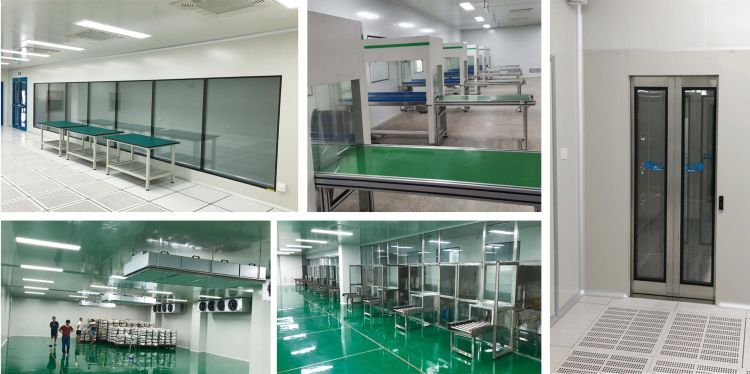Dust-Free Clean Room: Maintaining Sterile Environments
- 2024-01-17
- View 10
In various industries, maintaining sterile and controlled environments is of utmost importance. Dust-free clean rooms play a vital role in ensuring the integrity of processes and protecting sensitive products from contamination. This article will explore the concept of dust-free clean rooms, their design, maintenance, and the industries that rely on them.

Introduction: The importance of dust-free clean rooms
Dust-free clean rooms are specialized environments constructed to minimize airborne particles, such as dust, microbes, and pollutants, that could compromise product quality or safety. These controlled environments are essential for industries such as pharmaceuticals, biotechnology, microelectronics, and medical device manufacturing, where even minor particles can have significant consequences.
Understanding clean room classifications
Clean rooms are classified based on the level of airborne particle contamination permitted within a given space. The classifications range from ISO Class 1 (the strictest standard) to ISO Class 9 (the least strict). Each classification has specific requirements for particle count limits, which dictate the design and operation of the clean room.
Designing a dust-free clean room
To create an effective dust-free clean room several factors must be considered during the design phase.
Layout and airflow considerations
The layout of a clean room should be designed to minimize the introduction and circulation of particles. Separate areas are designated for gowning, material transfer, and equipment to prevent cross-contamination. Additionally, carefully engineered airflow patterns help direct particles away from critical areas and towards filtration systems.
Controlling particulate matter
Controlling particulate matter is crucial in a dust-free clean room. Smooth surfaces, impermeable materials, and appropriate finishes are used to minimize dust generation HEPA (High-Efficiency Particulate Air) filters and ULPA (Ultra-Low Penetration Air) filters are employed to capture and remove particles from the air.
HVAC systems and filtration
An efficient Heating, Ventilation, and Air Conditioning (HVAC) system is vital for maintaining the desired cleanliness levels. The system should provide adequate air changes per hour, filtration efficiency, temperature control, and humidity control. Filters are regularly inspected and replaced to ensure optimum performance.
Maintaining cleanliness and sterility
To preserve the integrity of a dust-free clean room, meticulous cleaning procedures and contamination prevention strategies must be implemented.
Cleaning procedures and protocols
Regular cleaning protocols involve the use of specialized equipment, non-shedding wipes, and cleaning agents that do not introduce additional contaminants. Surfaces, floors, walls, and equipment are routinely cleaned to remove any accumulated particles. Strict adherence to cleaning schedules and detailed record-keeping is essential.
Contamination prevention strategies
Preventing contamination is critical in a dust-free clean room. This includes practices such as proper gowning, disinfection of equipment, and maintaining a controlled environment within the clean room. Training employees on contamination control measures and enforcing strict adherence to protocols is crucial.
Regular monitoring and testing
Continuous monitoring and testing are performed to ensure the clean room meets the required standards. Air sampling, particle counting, microbial monitoring, and surface swabbing are some of the methods employed to evaluate cleanliness levels. Any deviations from the established standards are promptly addressed to maintain the integrity of the clean room.
Industries and applications that require dust-free clean rooms
Dust-free clean rooms find extensive applications in various industries that demand high levels of cleanliness and sterility.
Pharmaceutical and biotechnology
In the pharmaceutical and biotechnology sectors, clean rooms are essential for the production of drugs, vaccines, and medical devices. These controlled environments prevent contamination, ensuring the safety and efficacy of products.
Microelectronics and semiconductor manufacturing
The microelectronics and semiconductor industries rely heavily on dust-free clean rooms to manufacture integrated circuits, microchips, and electronic components. Even a small particle can disrupt the functionality of these delicate devices.
Medical device production
Clean rooms are crucial in the production of medical devices such as implants, prosthetics, and surgical instruments. Sterility and the absence of contaminants are essential to ensure patient safety and product reliability.
Conclusion
Dust-free clean rooms are critical in maintaining sterile environments and preventing contamination in various industries. Through meticulous design, strict protocols, and regular monitoring, these controlled environments play a pivotal role in ensuring the integrity and quality of products. As technology advances and industries evolve, the demand for dust-free clean rooms continues to grow.
FAQs
Q1: Are all clean rooms the same?
A1: No, clean rooms are classified based on the level of airborne particle contamination permitted within them.
Q2: What are HEPA and ULPA filters?
A2: HEPA filters (High-Efficiency Particulate Air) and ULPA filters (Ultra-Low Penetration Air) are high-performance filters used to capture and remove particles from the air.
Q3: How often should clean rooms be cleaned?
A3: Clean rooms should be cleaned regularly according to strict protocols and schedules to maintain cleanliness and sterility.
Q4: Can clean rooms be customized for specific industry requirements?
A4: Yes, clean rooms can be designed and customized to meet the specific cleanliness and sterility requirements of different industries.
Q5: Why are clean rooms important in medical device manufacturing?
A5: Clean rooms are crucial in medical device manufacturing to ensure the sterility and reliability of implants, prosthetics, and surgical instruments.
Kwang Cleanroom is proud to offer examples of a variety of our cleanroom projects below. Hospital Operating Theater Room, Clean Room Industry, ISO 4 Cleanroom, Clean Room Level, Cleanroom Level, Dust-Free Workshop Company, Air Shower Clean Room.
